Connecting Mitzu to ClickHouse
Mitzu is a no-code, warehouse-native product analytics application. Similar to tools like Amplitude, Mixpanel, and PostHog, Mitzu empowers users to analyze product usage data without requiring SQL or Python expertise.
However, unlike these platforms, Mitzu does not duplicate the company’s product usage data. Instead, it generates native SQL queries directly on the company’s existing data warehouse or lake.
Goal
In this guide, we are going to cover the following:
- Warehouse-native product analytics
- How to integrate Mitzu to ClickHouse
If you do not have a data set to use for Mitzu, you can work with NYC Taxi Data. This dataset is available in ClickHouse Cloud or can be loaded with these instructions.
This guide is just a brief overview of how to use Mitzu. You can find more detailed information in the Mitzu documentation.
1. Gather your connection details
To connect to ClickHouse with HTTP(S) you need this information:
The HOST and PORT: typically, the port is 8443 when using TLS or 8123 when not using TLS.
The DATABASE NAME: out of the box, there is a database named
default, use the name of the database that you want to connect to.The USERNAME and PASSWORD: out of the box, the username is
default. Use the username appropriate for your use case.
The details for your ClickHouse Cloud service are available in the ClickHouse Cloud console. Select the service that you will connect to and click Connect:
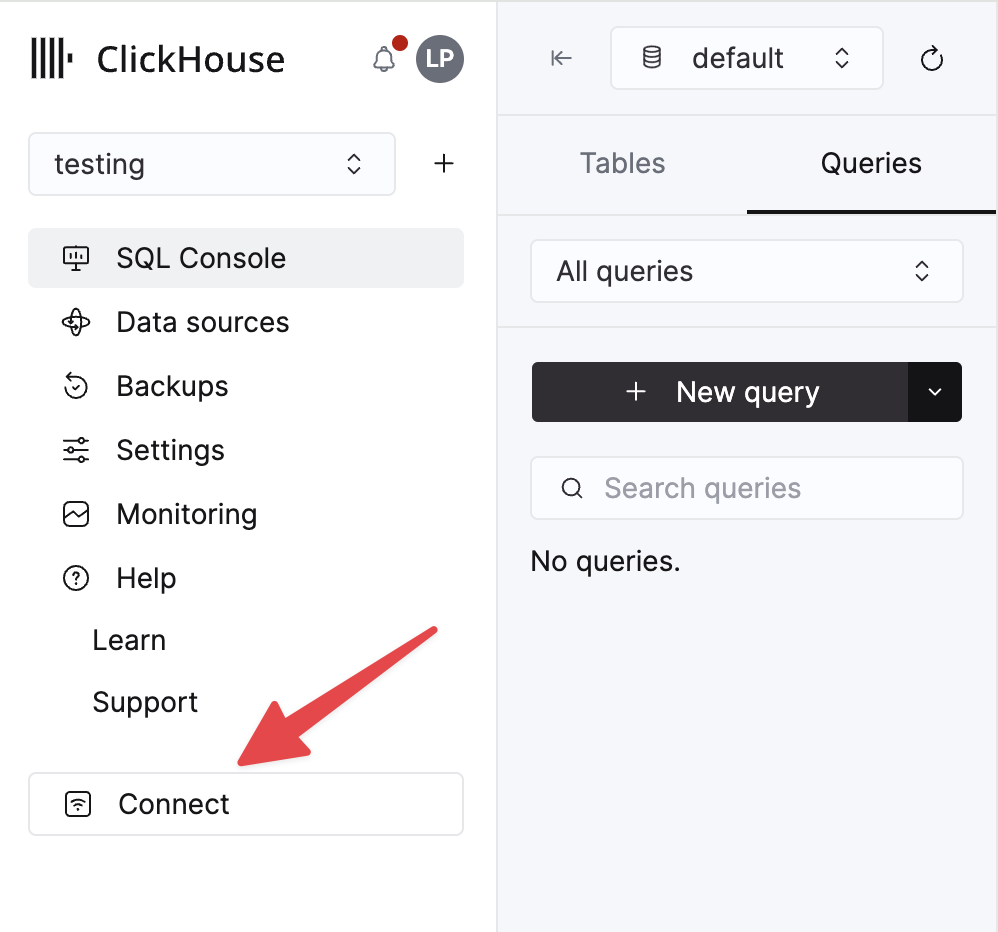
Choose HTTPS, and the details are available in an example curl command.
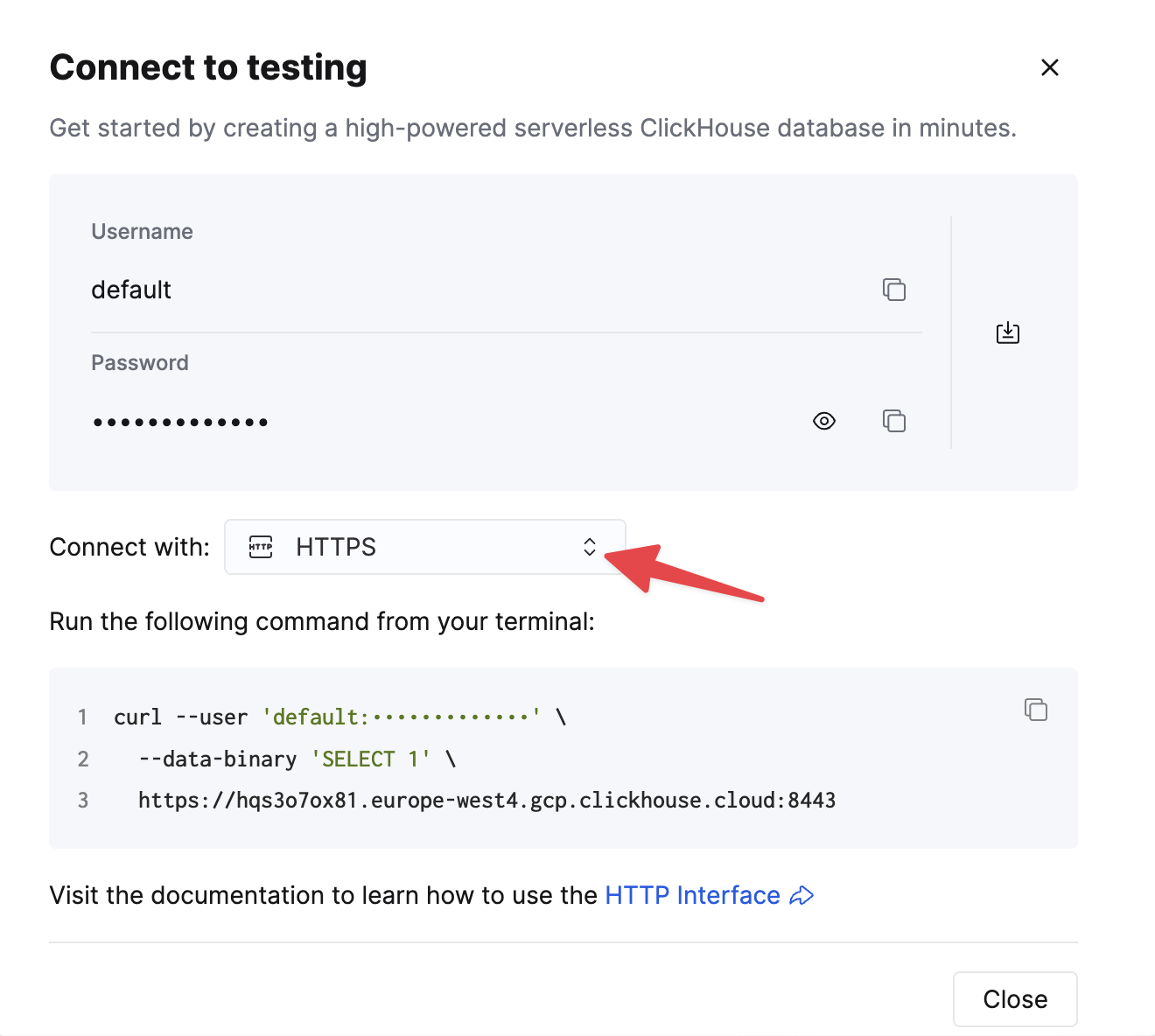
If you are using self-managed ClickHouse, the connection details are set by your ClickHouse administrator.
2. Sign in or sign up to Mitzu
As a first step, head to https://app.mitzu.io to sign up.

3. Configure your workspace
After creating an organization, follow the Set up your workspace onboarding guide in the left sidebar. Then, click on the Connect Mitzu with your data warehouse link.
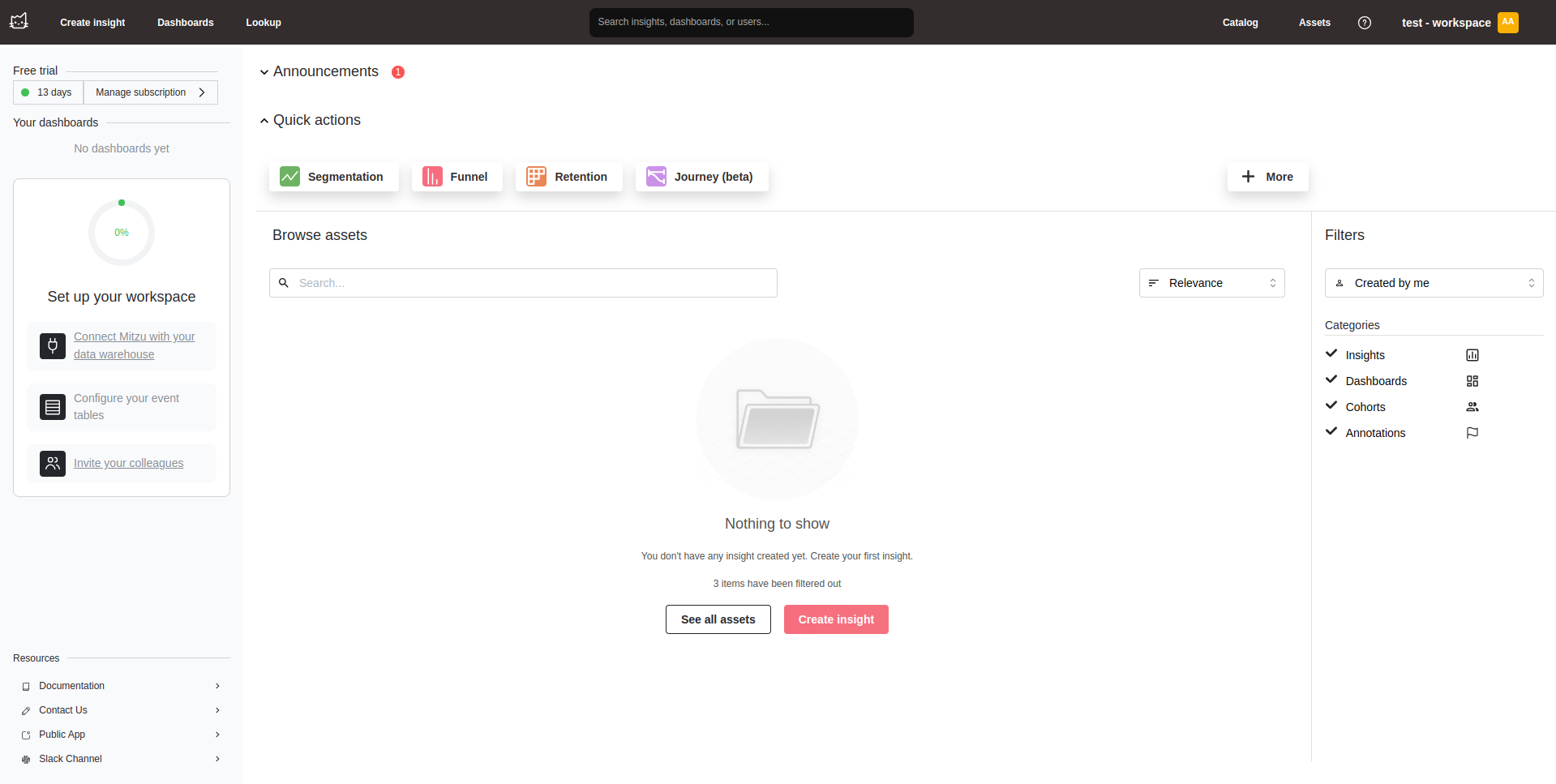
4. Connect Mitzu to ClickHouse
First, select ClickHouse as the connection type and set the connection details. Then, click the Test connection & Save button to save the settings.

5. Configure event tables
Once the connection is saved, select the Event tables tab and click the Add table button. In the modal, select your database and the tables you want to add to Mitzu.
Use the checkboxes to select at least one table and click on the Configure table button. This will open a modal window where you can set the key columns for each table.
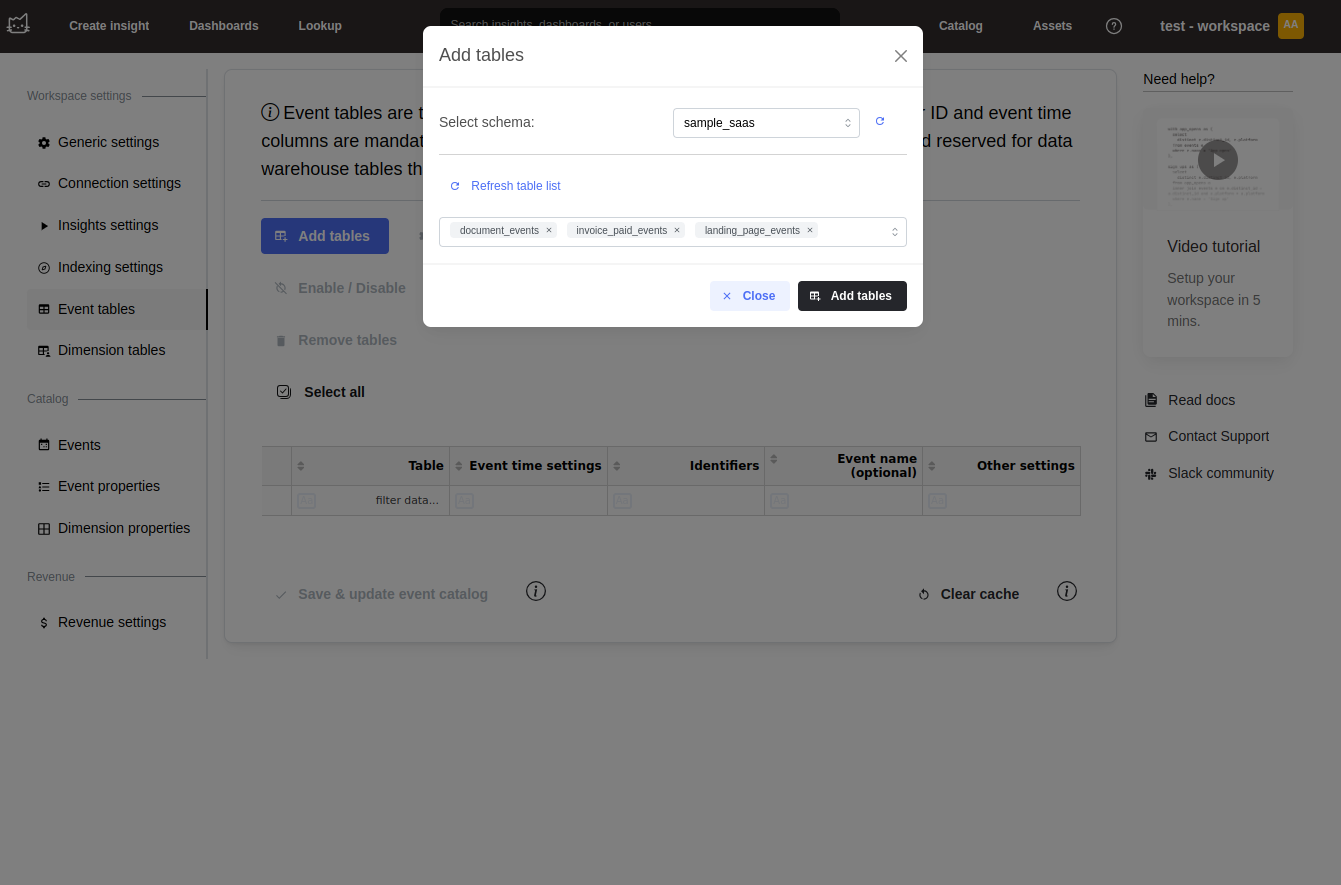
To run product analytics on your ClickHouse setup, you need to > specify a few key columns from your table.
These are the following:
- User id - the column for the unique identifier for the users.
- Event time - the timestamp column of your events.
- Optional[Event name] - This column segments the events if the table contains multiple event types.
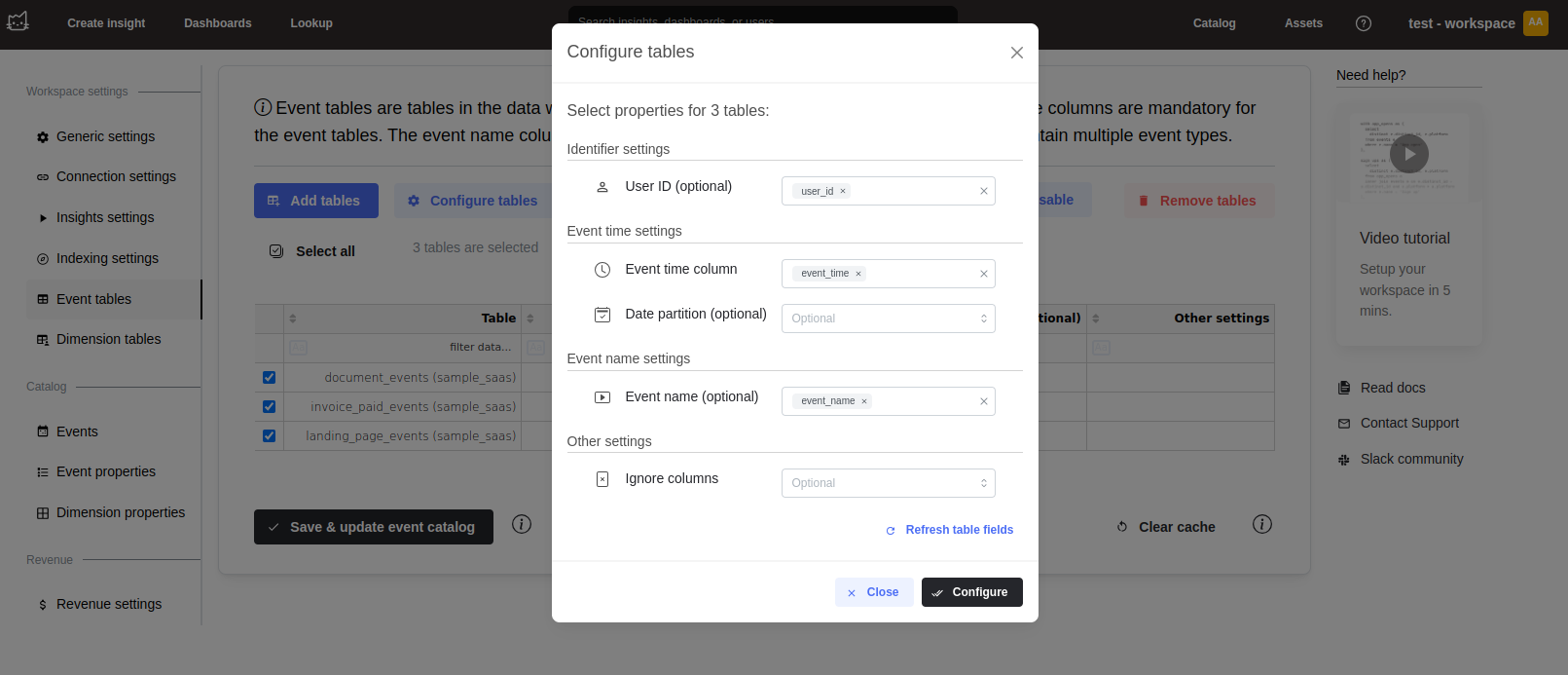
Once all tables are configured, click on the `Save & update event catalog` button, and Mitzu will find all events and their properties from the above-defined table. This step may take up to a few minutes, depending on the size of your dataset.
4. Run segmentation queries
User segmentation in Mitzu is as easy as in Amplitude, Mixpanel, or Posthog.
The Explore page has a left-hand selection area for events, while the top section allows you to configure the time horizon.
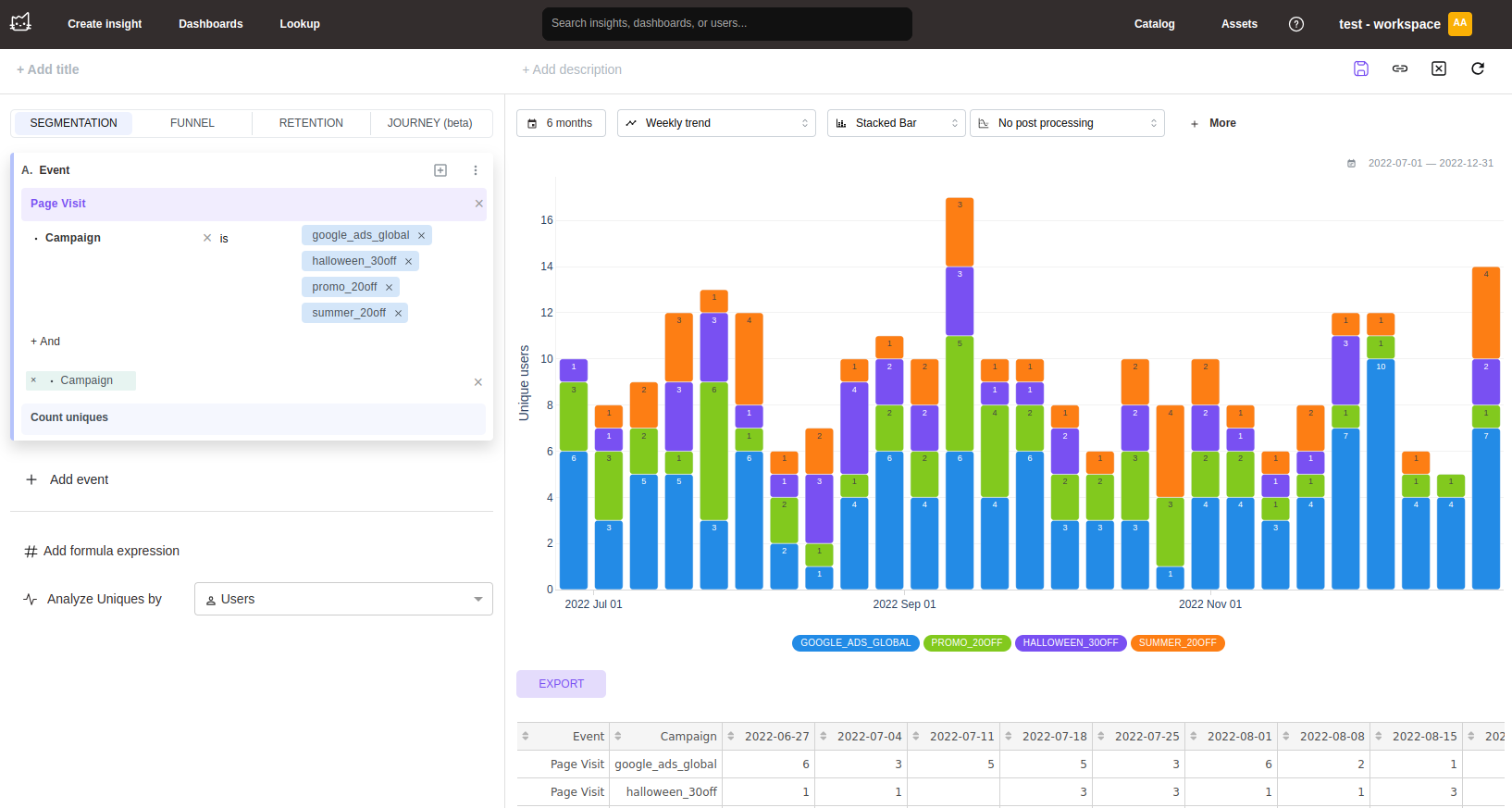
Filtering is done as you would expect: pick a property (ClickHouse column) and select the values from the dropdown that you want to filter. You can choose any event or user property for breakdowns (see below for how to integrate user properties).
5. Run funnel queries
Select up to 9 steps for a funnel. Choose the time window within which your users can complete the funnel. Get immediate conversion rate insights without writing a single line of SQL code.
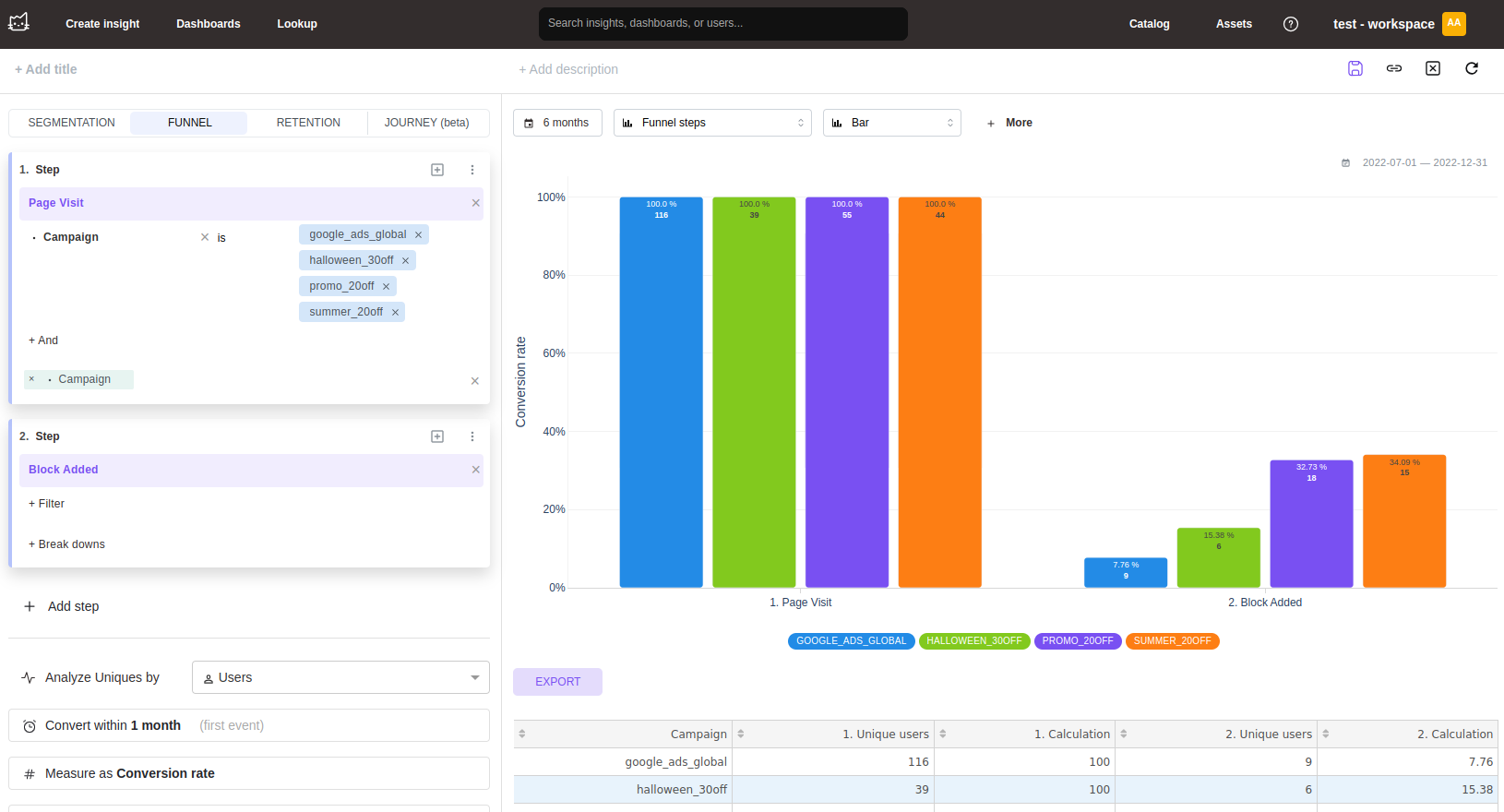
Pick Funnel trends to visualize funnel trends over time.
6. Run retention queries
Select up to 2 steps for a retention rate calculation. Choose the retention window for the recurring window for Get immediate conversion rate insights without writing a single line of SQL code.
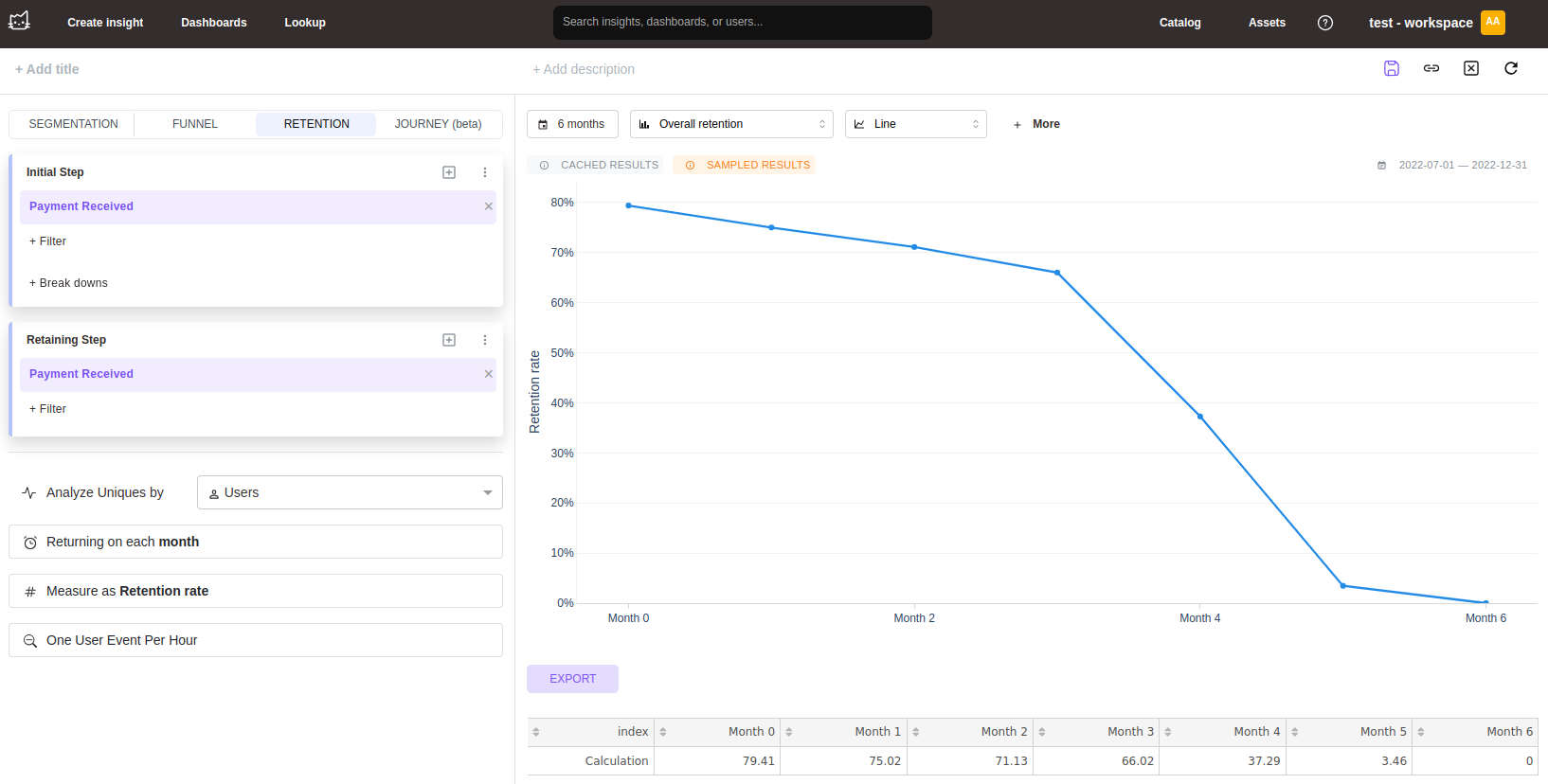
Pick Weekly cohort retention to visualize how your retention rates change over time.
7. Run journey queries
Select up to 9 steps for a funnel. Choose the time window within which your users can finish the journey. Mitzu's journey charts give you a visual map of every path users take through the selected events.

You can select a property for the segment Break down to distinguish users within the same step.
8. Run revenue queries
If revenue settings are configured, Mitzu can calculate the total MRR and subscription count based on your payment events.

9. SQL native
Mitzu is SQL Native, which means it generates native SQL code from your chosen configuration on the Explore page.
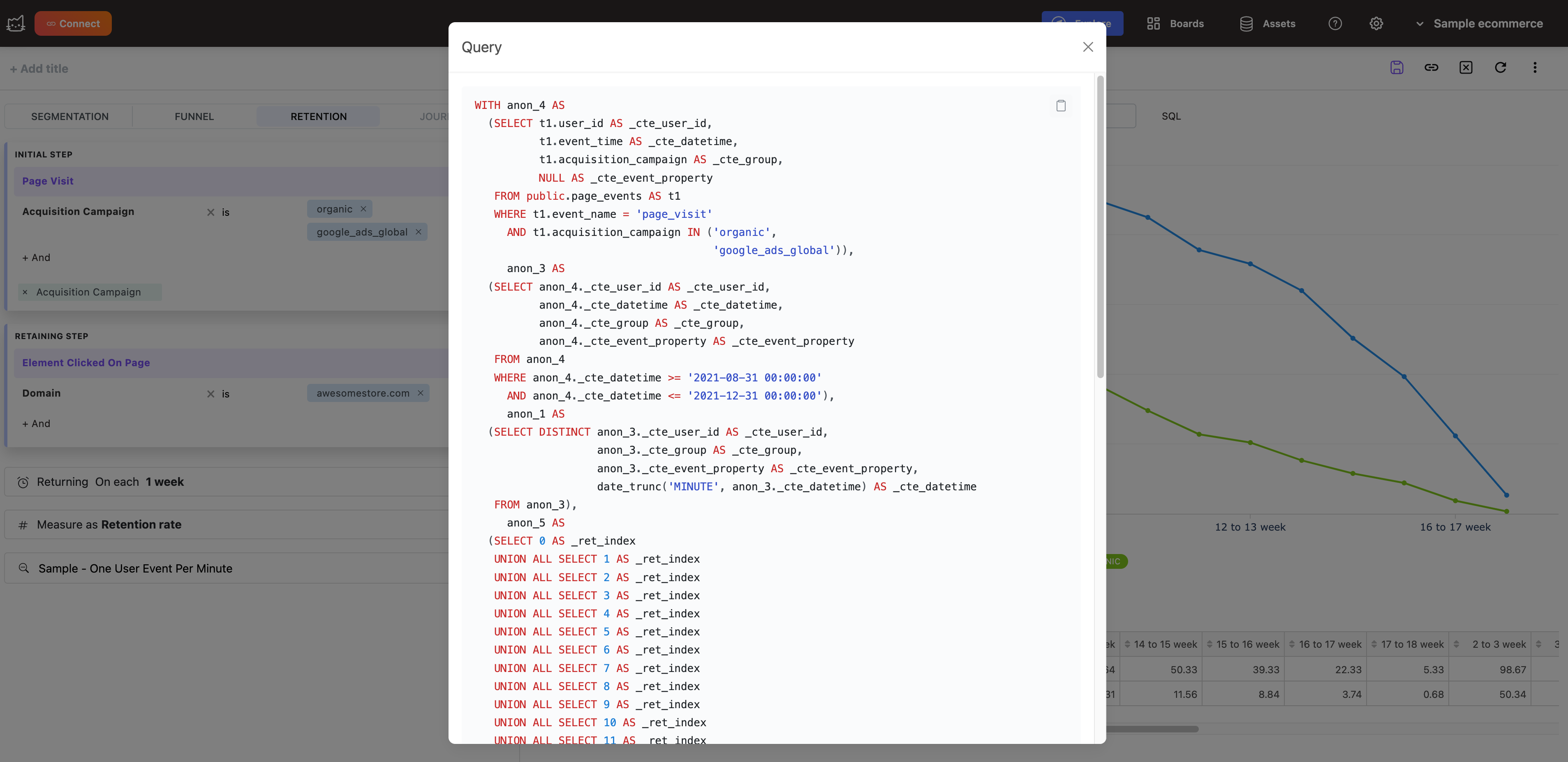
If you encounter a limitation with Mitzu UI, copy the SQL code and continue your work in a BI tool.
Mitzu support
If you are lost, feel free to contact us at support@mitzu.io
Or you our Slack community here
Learn more
Find more information about Mitzu at mitzu.io
Visit our documentation page at docs.mitzu.io